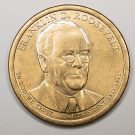Justice McReynolds delivered the unitary dissent, departing from the prepared opinion to scornfully declare that the Constitution “is gone.”
Originalism 101 (Part II)
Yesterday, I started my reaction to Larry Solum’s Legal Theory Lexicon entry on Originalism. In that post, I discussed The Origins of Originalism and Positive and Normative Approaches to Originalism. Today I will complete my discussion by addressing The New Originalism and Constructionist Originalism, and Precedent.
3. The New Originalism and Constructionist Originalism
In a section entitled “Original Public Meaning, Larry discusses both the original public meaning approach and the emergence of the new originalism.
While Larry’s discussion is accurate, I would break up the matters differently. First, I don’t like the term “the new originalism,” even though it is a very popular term. Part of the problem is that it is a vague. Sometimes it refers to the original public meaning approach as opposed to the original intent approach. Other times it refers to people who embrace construction as a distinct enterprise from interpretation.
But some people who endorse original public meaning, do not endorse (or do not appear to endorse) construction. Similarly, some people endorse construction, but do not endorse original public meaning (such as Keith Whittington). One might talk of original public meaning as the new originalism and construction as the new new originalism. But this all gets confusing and it is better to use a finer grained terminology.
Let me try to clarify matters. There are two issues: whether one factors original intent or original public meaning, and whether one favors construction or not. One might therefore break this into a two by two matrix with four possibilities, except I can’t figure out how to do this on the blog. So let me describe it with four lines:
a. Original intent plus construction –Whittington
b. Original public meaning plus construction – Solum, Barnett, Balkin
c. Original intent plus no construction – Raould Berger?
d. Original public meaning plus no construction – McGinnis & Rappaport, Scalia
Finally, I should note that there are even newer versions of originalism. For example, there is original methods originalism, the position that John McGinnis and I defend, which has been endorsed by other originalists, such as Steve Calabresi. I suppose we could be considered the new new new originalists, but that is just silly.
4. Precedent
Larry also discusses the question of precedent, noting that some originalists accept precedent while others argue that the original meaning should be followed rather than precedent. One can analyze this issue further. Some originalists have analyzed this issue in terms of general jurisprudence, claiming that originalism necessarily precludes precedent. Others, however, look at the question by analyzing the constitutional text. Some, such as Gary Lawson, argue that the Supremacy Clause requires that the constitutional text rather than precedent be followed. Others, such as John Harrison, John McGinnis, and myself, argue that the constitutional text allows precedent but (for the most part) does not require it. Instead, the Constitution treats precedent as general common law that is revisable by congressional statute. Still others such as Lee Strang argue that the judicial power incorporates into the Constitution a particular precedent approach.
If the Constitution does allow precedent, then the question is what type of precedent approach should be employed. John McGinnis and I advocate generally follow the original meaning except in certain limited situations, such as when a precedent has been widely and strongly accepted or when overturning it would create enormous costs. I believe that Larry Solum has endorsed following precedent pretty strictly, but his version of precedent involves a much narrower understanding of what precedent covers than the modern version of the doctrine, which largely identifies the precedent with what the court says it is holding.

